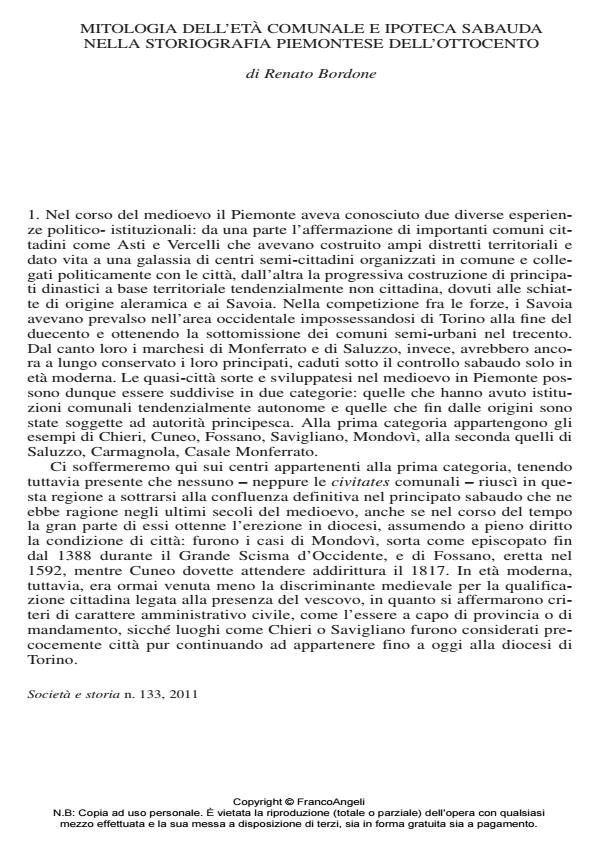Communal mythology and dynastic bias in nineteenth-century Piedmontese historiography
Journal title SOCIETÀ E STORIA
Author/s Renato Bordone
Publishing Year 2011 Issue 2011/133
Language Italian Pages 12 P. 437-448 File size 475 KB
DOI 10.3280/SS2011-133002
DOI is like a bar code for intellectual property: to have more infomation
click here
Below, you can see the article first page
If you want to buy this article in PDF format, you can do it, following the instructions to buy download credits

FrancoAngeli is member of Publishers International Linking Association, Inc (PILA), a not-for-profit association which run the CrossRef service enabling links to and from online scholarly content.
In the nineteenth century most cities and townships of Piedmont saw the production of municipal histories. The first influence at work here was that of the "model" medieval commune, applied even to urban or semi-urban centres which had not experienced any effective municipal autonomy in the 12th and 13th centuries. Later on, with the establishment of the united Kingdom of Italy and the rise of the Savoyard dynastic myth, the main reference was to the princely House which in the late middle ages had unified under its rule the subalpine area of Piedmont.
Keywords: Historiography; middle age; municipal history
Renato Bordone, Mitologia dell’età comunale e ipoteca sabauda nella storiografia piemontese del settecento in "SOCIETÀ E STORIA " 133/2011, pp 437-448, DOI: 10.3280/SS2011-133002